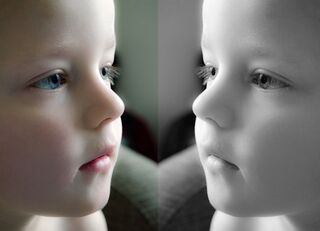Empathy
Replace Bullying with Empathic Listening
Listening to yourself and others in four steps.
Posted November 30, 2022 Reviewed by Kaja Perina
Key points
- Many of us have heard bullying language silence a victim.
- The opposite of bullying, empathic listening is a skill that can be learned.
- Empathy activates brain regions engaged in affective and cognitive processes.
- Empathic listening is a way to enact mirror transference to hear and support another individual.
Psychologist Dr. Lee-Anne Gray founded a school whose mission is “Empathic Education for a Compassionate Nation.” She teaches the art of empathic listening and it is a powerful technique to dismantle normalized bullying in our society.
Bullying is described in research as “unempathic” and “callous unemotional.” It is frequently characterized by not listening; instead, it uses words as weapons to spread rumours, humiliate, ostracize, shame and hurt. The target is meant to be silenced, not heard. The refusal to listen empathically is arguably as damaging as the spewing and hurling of language designed to belittle and disempower.

While most if not all are accustomed to bullying behaviour, few of us have been taught empathic listening. Here is a Dr. Lee-Anne Gray exercise that all of us can do, practice, and ultimately teach to others, especially those who use bullying as a way to interact with targets.
Empathic Listening in Four Steps
Step One Set a compassionate intention in order to assure the empathic exchange results in a caring response. Establish who will begin as speaker and who will begin as listener.
Step Two The speaker shares thoughts, ideas, feelings, stories, on any subject of their choice for a minute or so. The empathic listener pays close attention with the knowledge that their role is to repeat back what the speaker has shared. The empathic listener can only listen. They cannot interject, vocalize any sound, offer support, disagreement or any other response.
Step Three The empathic listener repeats as closely as possible what the speaker said and the speaker continues for the next minute or so. Again, the empathic listener repeats as closely as possible what the speaker said. This pattern continues until the speaker says: “I feel heard.”
Step Four Now the roles change. The speaker becomes the empathic listener and the listener becomes the speaker until once again the speaker says: “I feel heard.”
Imagine using this technique when you are having a fight with your partner or having a disagreement at work. Psychiatrist Helen Reiss speaks of the importance of “hearing the whole person” when she works with couples in marital conflict. Imagine using empathic listening when you are distraught about your teenager’s decision or your elderly parent’s refusal to move into assisted living.
Transform Bullying into Compassion

Consciously practicing empathy could operate as a powerful way to transform bullying into compassion. Empathy, as with all healthy qualities, starts with you and how you listen to yourself. Psychiatrist Daniel Siegel writes about a patient who healed by developing body awareness, journal writing to explore his feelings, and using imagery or visualization to attend to nonverbal emotions. He notes that these “essential elements of empathy are all forms of integration.”
While bullying and abuse involve projecting onto a victim one’s own feelings of self-loathing, shame, or fear, empathy involves listening to the way in which an individual experiences, feels, sees, thinks, and intends. While bullying involves projecting one’s own history onto a victim to relieve one’s own past trauma, empathy involves hearing an individual’s history and imagining how it might shape their present.
Shared Mind Awareness
Helen Reiss says that “empathy is best understood as a human capacity consisting of several different facets that work together to enable us to be moved by the plights and emotions of others.” In the 1990s, Italian neuroscientists discovered that if one primate or monkey observed another one eating something, then similar parts of its brain would activate. They named the brain cells that were firing up “mirror neurons” to convey the idea that one brain mirrors another. (It is not clear whether there are dedicated "mirror neurons" in humans or whether some neurons have this property among others).
As neuroscientists continue to research the way in which one brain mirrors another, they have learned that for children empathy was a necessary skill for survival. It’s believed that to survive, infants and toddlers needed to learn what the adults in their world were thinking, feeling, and intending. Brain images have shown that we are indeed wired for empathy, or shared mind awareness from the day we are born, and our empathic capacity requires specialized brain circuits that allow us to perceive, process, and respond to others.
Mirroring Transference
Like all parts and structures in the brain, the empathy ones can be strengthened, weakened, or eliminated by the experiences you have and the practices to which you commit. Decades before the discovery of “mirror neurons” in primates in the 1990s, psychoanalyst Heinz Kohut was studying what he called “mirroring transference.”

He examined the way in which children came to learn of their own uniqueness, their signature strengths, and their special qualities through the eyes of their caregivers when they reflected back to children these qualities.
Kohut observed this vital response for children when they had adults in their lives that met their eyes and met them with matching emotion, caring postures, and reflective facial expressions.
Kohut referred to this as “psychological oxygen” for babies and children. In the bullying and abuse paradigm, some babies and children do not get this oxygen. They are neglected. No one mirrors to them their golden potential. Instead, they are exposed to noxious air that gives them a distorted idea of their potential, transforming the way they see themselves from gold to lead.
Empathic listening furthers into adulthood this reciprocal, responsive way of interacting that holds up an auditory mirror to another person who is speaking. Instead of a society that normalizes bullying, imagine homes, schools, sports, workplaces, and political arenas where children and adults provide “psychological oxygen” for one another through empathic listening and compassionate action. Our innate gift of brain plasticity means we can make this dream a reality.
This post is an excerpt from The Bullied Brain: Heal Your Scars and Restore Your Health.
References
Blakemore, S. (2018). Inventing Ourselves. New York: Hachette.
Gray, L. (2019). Educational Trauma. London: Palgrave Macmillan.
Gray, L. (2016). Self-Compassion for Teens. Eau Claire, WI: PESI.
Reiss, H. (2018). The Empathy Effect. Boulder, CO: Sounds True.
Siegel, D. (2013). Brainstorm. New York: Penguin.
Siegel, D. (2011). Mindsight. New York: Bantam.Siegel, D. (2013). Brainstorm. New York: Penguin.




